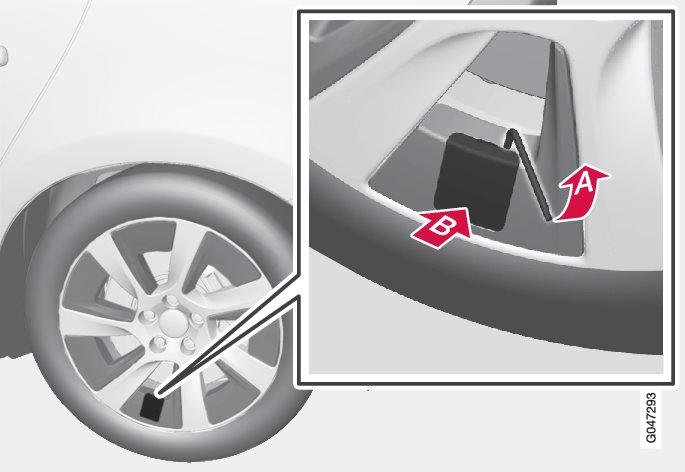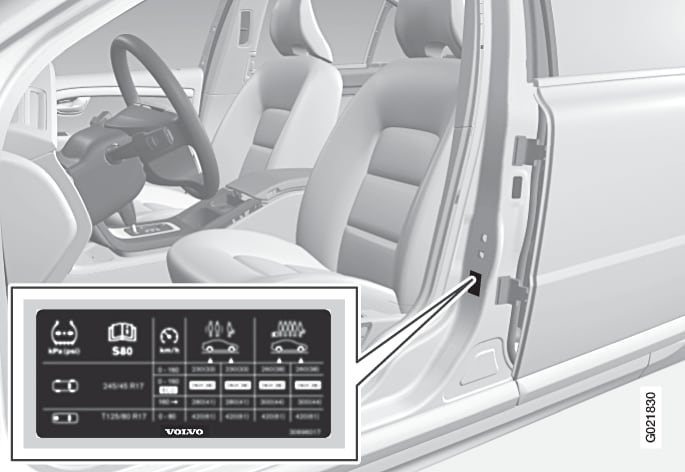Check the air pressure in the tyres
The tyre pressures must be checked every month.

The tyre valve is covered by a plastic cover which is equipped with a hole1.
Remove the valve cover
Take the torx wrench (which is fitted in the foam block behind the panel on the left-hand side of the cargo area).
Press the torx wrench into the hole.
Prize off the cover using the torx wrench  .
.
 .
.Remove the valve cap.
Refit the valve cover
Fit the valve cap.
Press one edge of the cover (without the hole) into place (nearest the tyre  ).
).
 ).
).Then fold the cover in toward the wheel rim - and at the same time, gently press down the angled top edge in order to help it in under the edge of the wheel rim.
Check that the cover is flush with the surface of the wheel rim - if not, gently press in the part that is bulging out.
Note
- Check the tyre pressure when the tyres are cold. "Cold tyres" means that the tyres are at the same temperature as the outdoor temperature. The tyres will heat up and the tyre pressures will increase after driving for a few kilometres.
- Tyre pressures which are too low will increase fuel consumption, reduce tyre service life and impair the car's handling. Driving with tyre pressures which are too low may lead to the tyres overheating and sustaining damage. Tyre pressures affect ride comfort, road noise and steering.
- Tyre pressure decreases over time, this is a natural phenomenon. Tyre pressure also varies depending on ambient temperature.
Tyre pressure label

The tyre pressure label on the driver side's door pillar (between frame and rear door) shows the tyre pressures for the car's recommended tyre dimensions. This is also specified in the tyre pressure table, see Tyres - approved tyre pressures.